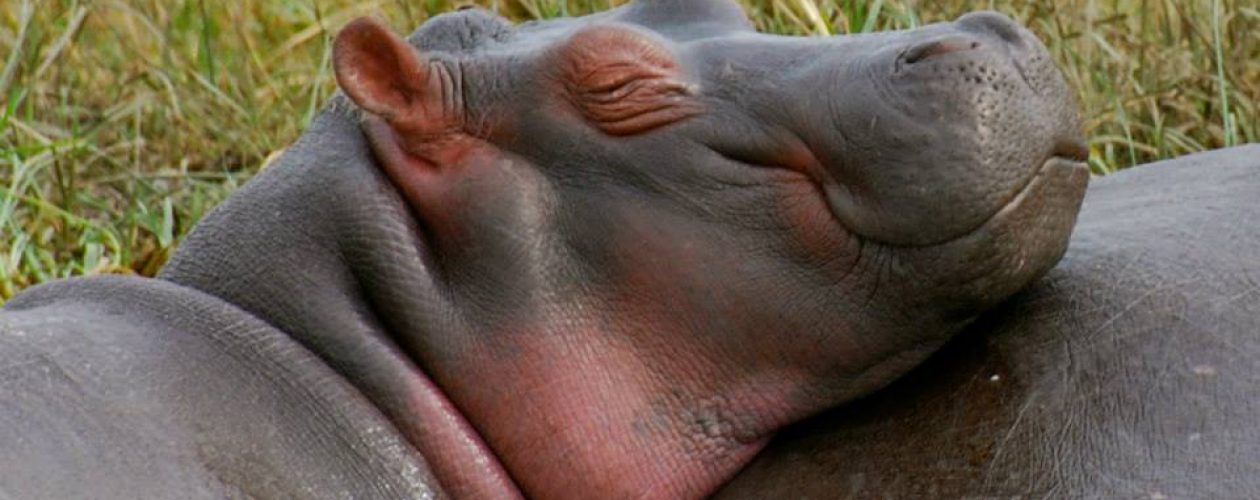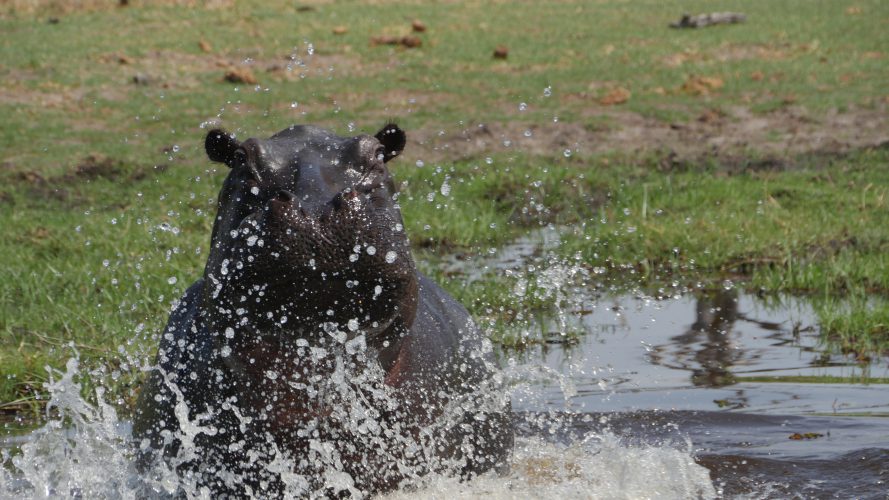Anyone planning a safari will come across the term “Big Five”. It was originally a hunting term used to describe the five most ferocious animals to bag. Luckily these days most animals that are spotted on safari are shot with cameras. But the term “Big Five” has remained popular and is now happily used by those marketing safaris. The “Big Five” (in case you didn’t know) are the elephant, lion, leopard, rhino and Cape buffalo. There’s also a “Little Five“, a cute pantheon of animals whose names relate to that of the “Big Five”. The “Little Five” include the: Buffalo weaver, Ant lion, Rhino beetle, Leopard tortoise and Elephant shrew.
The “Fun Five”
We at African Portfolio have decided to embark on a new grouping of animals that we know our clients love to see (and we do too). Without further ado, here are our picks for Africa’s “Fun Five” on safari….

-
- Warthog – We’ve never met anyone who did not smile at their first encounter with a warthog (Phacochoerus africanus). The adult male can look quite vicious with large tusks and muscular body. But once he turns to run, and you see that little tail stick straight up in the air from his little muscular behind — you’ll be grinning. Warthogs are common in almost every national park you visit on safari, and you’ll often see little ones with their mothers. Warthogs are named for large wart-like protrusions on their foreheads (some with white hair growing out them). They sleep in burrows, which they enter backwards.
- Hippo – The minute you spot your first hippo (Hippopotamus amphibius) on safari, you’re guaranteed to be impressed with its huge size. It won’t take long before you’re told that it is one of Africa’s most dangerous animals. But the hippo is vegetarian, it consumes over 10
 00 lb’s of vegetation daily, and only tends to attack when it feels threatened. You can enjoy hippo pods in many of Africa’s rivers, streams and lakes, idling away their time staying cool. Hippos can spend up to ten minutes submerged and then reappear on the surface with satisfying grunts and snorts. And this is where the “awww” factor comes in. Hippos sound like the most contented animals on earth. Their constant grunting and snorting provides the background noise for many safari camps close to water.
00 lb’s of vegetation daily, and only tends to attack when it feels threatened. You can enjoy hippo pods in many of Africa’s rivers, streams and lakes, idling away their time staying cool. Hippos can spend up to ten minutes submerged and then reappear on the surface with satisfying grunts and snorts. And this is where the “awww” factor comes in. Hippos sound like the most contented animals on earth. Their constant grunting and snorting provides the background noise for many safari camps close to water. - Vervet Monkey– Monkeys are always fun to watch because they remind us of ourselves.
 And Vervets (Chlorocebus pygerythrus) are a lot cuter than baboons, which are also a common sight on every African safari, so we’ve chosen them to be in our “Fun Five”. You can often spot Vervets in large family groups and it’s easy to spend half an hour just enjoying their social interaction. The babies are incredibly cute, especially when they are old enough to ride on their mother’s backs like young jockeys. Vervet males have a striking blue scrotum which always gets a good giggle.
And Vervets (Chlorocebus pygerythrus) are a lot cuter than baboons, which are also a common sight on every African safari, so we’ve chosen them to be in our “Fun Five”. You can often spot Vervets in large family groups and it’s easy to spend half an hour just enjoying their social interaction. The babies are incredibly cute, especially when they are old enough to ride on their mother’s backs like young jockeys. Vervet males have a striking blue scrotum which always gets a good giggle. - Meerkat – This high profile little animal has really become popular due to its starring role in Animal Planet’s Meerkat Manor.
 You can see Meerkats (Suricata suricatta) throughout southern Africa in dry habitats. Meerkats are highly social and it’s their work ethic and sense of community that makes them so wonderful to watch. There are some excellent camps like Jack’s camp in Botswana where you can even interact with Meerkats who are used to humans. The Meerkats basically use the heads of tourists as a great look out spot.
You can see Meerkats (Suricata suricatta) throughout southern Africa in dry habitats. Meerkats are highly social and it’s their work ethic and sense of community that makes them so wonderful to watch. There are some excellent camps like Jack’s camp in Botswana where you can even interact with Meerkats who are used to humans. The Meerkats basically use the heads of tourists as a great look out spot.

- Porcupine – The porcupine (Atherurus africanus) is one of those animals that really leave a lasting impression when you see one on safari. They are much bigger than you think, and those quills are just phenomenal. Porcupines in Africa can weigh as much as 60 lbs. With all that protection you can’t help but think it must be a very tasty animal indeed, and apparently it does appear on Kenyan dinner tables occasionally.
What’s Your “Fun Five?”
There are of course lots of fun runners-up to this list.  We wanted to include penguins but they can only be seen near Cape Town and not on a regular African safari circuit. The aardvark was also omitted because it’s quite a rare sight. The ostrich was nominated, but while amusing, was not considered “fun” enough to make the cut.
We wanted to include penguins but they can only be seen near Cape Town and not on a regular African safari circuit. The aardvark was also omitted because it’s quite a rare sight. The ostrich was nominated, but while amusing, was not considered “fun” enough to make the cut.
What animals would be on your “Fun Five” list? Please let us know by leaving a comment below.
